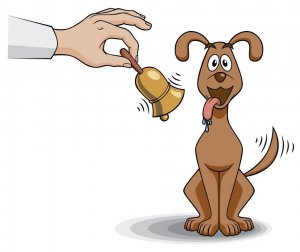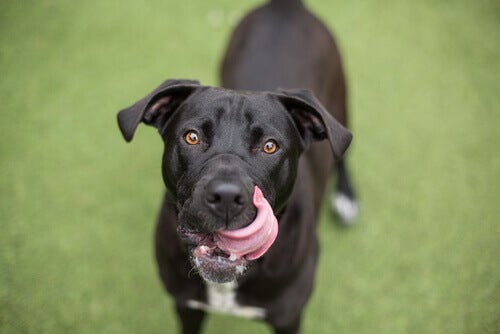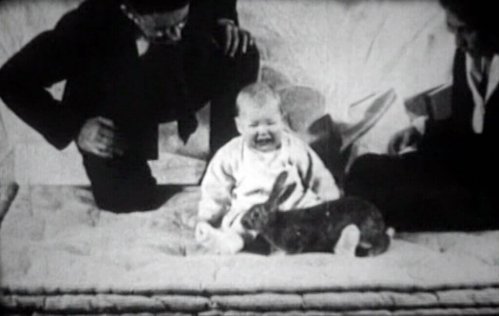What's Classical Conditioning in Psychology?

What’s classical conditioning? Well, it’s a type of learning that had a massive influence on behaviorism. This is a school of psychology with a systematic focus. It arose in the 19th century. Behaviorism assumes that many behaviors come about as a result of associations. In other words, they’re reflexes produced by a conditioned response to certain stimuli. This association also results in an individual’s experiences.
Russian physiologist Ivan Pavlov, along with John B. Watson, was one of the first people to describe classical conditioning. This is one of the key processes within behaviorism along with operant, or instrumental, conditioning.
“Don’t become a mere recorder of facts, but try to penetrate the mystery of their origin.”
-Ivan Pavlov-
What’s classical conditioning?
The foundations of behaviorism lie in the assumption that all learning is produced as a result of interactions with a being’s environment. This shapes their behavior (teaches). In classical conditioning, the learning process starts with an initial stimulus that provokes a bodily response. One example of such a stimulus is the smell of food. This initial response should be unconditional, regular, and measurable. One example of such a response is salivation. This stimulus is then associated with a neutral event. For example, a sound. This event didn’t produce the response (salivation) before the conditioning process.

After repeatedly presenting the stimulus in close spatial-temporal proximity to the subject, the neutral event acquires the functions of that stimulus. At this point, it causes the same response as the unconditioned stimulus. That’s how a sound can end up producing salivation in a dog, for example.
It’s important to keep in mind that classical conditioning requires placing a neutral signal before a natural reflex. In Pavlov’s classic experiment with dogs, the neutral signal was a certain sound. The natural reflex was salivation in response to food. Upon associating the neutral stimulus with the environmental stimulus (the food), the sound (conditioned stimulus) was able to produce the salivatory response.
The basic principles of classical conditioning
Classical conditioning involves creating an association between two stimuli that result in a single learned response. This process contains three basic phases:
Phase 1. Before conditioning
The first part of the classical conditioning process requires a stimulus. We’ll call this the unconditioned stimulus. This stimulus will automatically provoke a response. Let’s continue with the example we proposed beforehand. In this case, salivation is a natural response to smelling food.
During this phase of the process, the unconditioned stimulus will result in an unconditioned response. For example, if someone presents the subject with food, it could cause natural and automatic salivation. In this example, the food is the unconditioned stimulus. The salivation, on the other hand, is the unconditioned response.
There’s also a neutral stimulus that doesn’t yet produce any effect. When you pair this neutral stimulus with the unconditioned stimulus, it evokes a response.
Thus, the unconditioned stimulus is one that provokes a response naturally, automatically, and without conditioning. For example, sensing the smell of a food you like can make you hungry. Here, the smell of the food would be the unconditioned response.
The unconditioned response is one that a subject doesn’t have to learn. It occurs naturally in response to an unconditioned stimulus. In other words, the feeling of hunger in response to smelling a certain food would be an unconditioned response.
Phase 2. During conditioning
During the second phase of the classical conditioning process, the person pairs the neutral stimulus with the unconditioned stimulus. They do this repeatedly. The result of this pairing is the development of an association between the neutral stimulus and the unconditioned stimulus. That’s how the previously neutral stimulus becomes the conditioned stimulus. The subject now has conditioning which makes them respond to this new stimulus.
The conditioned stimulus was nothing but a neutral stimulus before. However, after someone associates it with the unconditioned stimulus, it can produce a conditioned response. So, if you hear whistling at the same time as you smell a food you like, that whistling will eventually cause a conditioned response on its own. Of course, this pairing has to happen many times in order to produce this effect.
Phase 3. After conditioning
Once the person makes the association between the unconditioned stimulus and the conditioned stimulus, things change. At that point, the conditioned stimulus alone provokes a response. That happens even without the presence of the unconditioned stimulus.
Experts call the resulting response the conditioned response. The conditioned response is the response the conditioned person learns to the previously neutral stimulus. In the previous example, the conditioned response is the feeling of hunger upon hearing the whistle.
Main principles of classical conditioning
Behaviorists have described a series of diverse phenomena they associate with classical conditioning. Some of these elements involve the initial establishment of the response. Others are about the dissipation of a response. These are important elements if you want to understand the classical conditioning process.

Acquisition is the initial learning stage. At this point, the person establishes the response for the first time and then strengthens it gradually. During this acquisition phase of classical conditioning, a neutral stimulus is repeatedly paired with an unconditioned stimulus.
Remember that the unconditioned stimulus creates a response. This should happen automatically and naturally. The response should occur without any learning at all. Once the association is there, the subject will begin to enact a certain behavior in response to the previously neutral stimulus. Experts now call this stimulus the conditioned stimulus. At this point, the subject has acquired the response.
Extinction
Extinction happens when the conditioned response gets weaker or disappears. In classical conditioning, this happens when a conditioned stimulus becomes unpaired from an unconditioned stimulus.
Nevertheless, sometimes a learned response can come up again suddenly. This can even happen even after a period of extinction. Spontaneous recovery is the reappearance of the conditioned response after a rest period. The same can happen after a period of diminished response. If the conditioned stimulus and the unconditioned stimulus are no longer paired, extinction can happen very quickly after a spontaneous recovery.
The generalization of the stimulus is the tendency of the conditioned stimulus to evoke similar responses after the response is conditioned. There’s a famous experiment that John B. Watson conducted called the Little Albert experiment. In it, he conditioned a young child to fear a white rat. The boy showed generalization of this stimulus. They observed this when they saw he was afraid of other white blurry objects. This included stuffed animals and even Watson’s own hair.
Discrimination
Discrimination is the ability to differentiate between a conditioned stimulus and other stimuli. Others, that is, which someone hasn’t paired with an unconditioned stimulus. Under this principle, the subject will only respond to the conditioned stimulus when they’re able to distinguish between two stimuli.
There are five main principles in classical conditioning. They are acquisition, extinction, spontaneous recovery, stimulus generalization, and stimulus discrimination.
Classical conditioning and advertising
You can find many clear examples of the classical conditioning theory in your daily life. One constant example is how people use it in advertising. Advertisers use classical conditioning as a tactic to try and get a certain response.
The advertising you see on game shows on TV is one of the many examples that exist. Within this positive and exciting environment, someone watching the shows could begin to develop an excitement response upon hearing about a product in a commercial. They would associate it with the environment.
All cited sources were thoroughly reviewed by our team to ensure their quality, reliability, currency, and validity. The bibliography of this article was considered reliable and of academic or scientific accuracy.
- Burgos, J. (2014). Historia de la psicología. Madrid: Palabra.
- Commons, M., Staddon, J., y Grossberg, S. (1991). Neural network models of conditioning and action. Hillsdale: Lawrence Erlbaum Associates.
- Sánchez Balmaseda, P., García García, A. y Ortega Lahera, N. (2005). Aprendizaje y condicionamiento clásico. Madrid: Universidad Nacional de Educación a Distancia.
- Tarpy, R. (2003). Aprendizaje. Teoría e investigación contemporáneas. Madrid: McGraw-Hill.
This text is provided for informational purposes only and does not replace consultation with a professional. If in doubt, consult your specialist.








